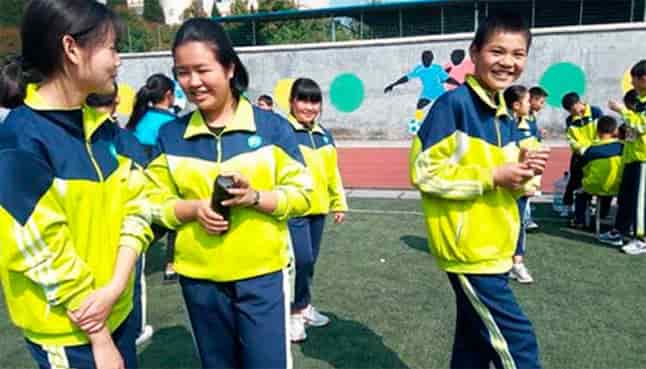 How to avoid school absenteeism among adolescents is a challenge faced by schools in different countries of the world for years. Some schools in China believe they have the solution: smart uniforms that allow teachers to know at all times where their students are and to control their attendance.
How to avoid school absenteeism among adolescents is a challenge faced by schools in different countries of the world for years. Some schools in China believe they have the solution: smart uniforms that allow teachers to know at all times where their students are and to control their attendance.
More than 10 schools in the province of Guizhou and the Guangxi Zhuang region in southern China already have these uniforms, according to the official newspaper Global Times. Lin Zongwu, director of the 11th school in Renhuai - a city of Guizhou -, told the same newspaper that both teachers and parents of students automatically receive information about the time of entry and exit of the school of minors. At this school, more than 800 students wear these uniforms since 2016 and, according to Lin, a remarkable increase in attendance has been achieved.
When students wearing uniforms leave the center without permission, an alarm is triggered. In addition, this system tries to avoid possible tricks of adolescents to leave the school. According to the same media, each garment has been registered with each of the faces of the students. Therefore, if the uniforms are changed among them, the alarm also sounds thanks to a facial recognition equipment installed on the doors of the schools.
Like most garments with smart technology on the market, this set can be washed: it supports up to 500 washes and temperatures of up to 150 degrees. Guanyu Technology, the company that develops this technology, explains that the uniforms are equipped with two chips -one in each shoulder-.
The chips, according to the newspaper The Epoch Times, have sensors that can detect when a student falls asleep in class and activate an alarm. They also allow minors to make cashless payments at school with facial or fingerprints to confirm the purchase. Parents can control their children's purchases and even set purchase limits through a mobile application developed by the company.
The privacy of students
The company said in a statement posted on the Chinese social network Weibo and picked up by the Australian news service Abc news that the uniforms provide an "intelligent management method that benefits students, teachers and parents." But the use of these garments It has sparked a debate in Chinese social networks.These uniforms can be a violation of the privacy of minors because a GPS system could track their movements even outside of school.
The schools claim not to use this technology outside of school hours. "We do not verify the precise location of students after school, but when someone is missing class, the uniform helps us locate it," Lin told the Global Times. Even so, dozens of users have shown their concern in the networks. "It is horrible, I imagine that the parents accepted this after they were brainwashed," said one user on Weibo, according to The Telegraph, who worried that this news would announce an increasingly Orwellian society in China: " When will all students have to carry one of these uniforms? "
On the contrary, there are some netizens who support the use of this new technology: "I think it's fine. First, it prevents potential criminals from entering schools. Second, the uniforms will be useful in the case of locating missing students, "another user wrote on Weibo, according to the same newspaper. The marketing manager of Guanyu Technology has also highlighted in this social network the benefits of uniforms, according to Abc news. "If you go to any school and you ask the security guard how many students there are in the center today, they will not be able to respond. But we can, "he said.
This is not the first time that a Chinese school uses technology to monitor students. In recent years, Beijing authorities have encouraged schools to develop "smart campuses" in an effort to digitize education. In May 2018, a high school in the city of Hangzhou installed cameras with facial recognition technology to track the attention of students in class, according to The Epoch Times. A year earlier, another school in the same city pioneered the use of facial recognition technology to buy lunch in the downtown cafeteria.
Digital Newspaper El País
